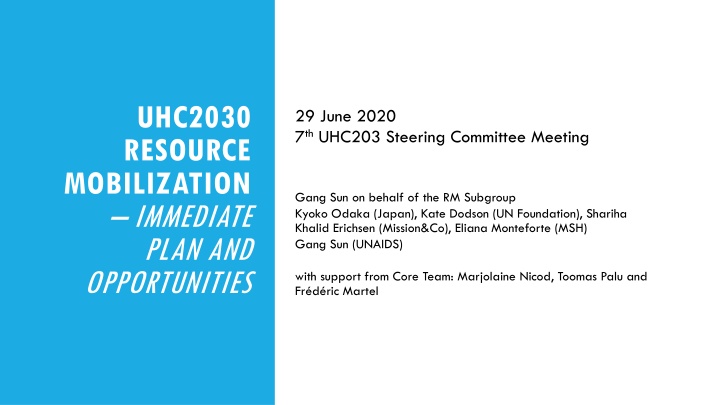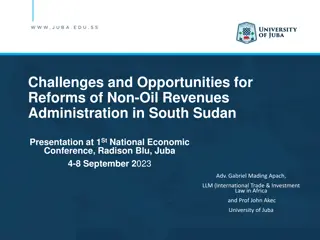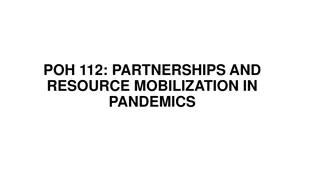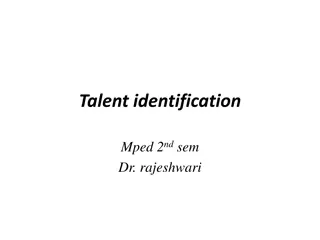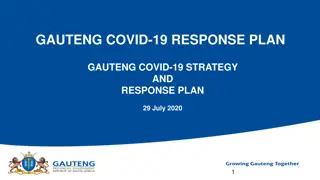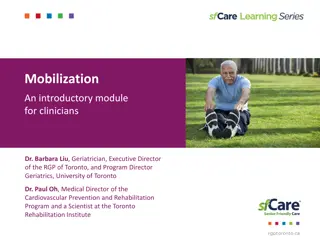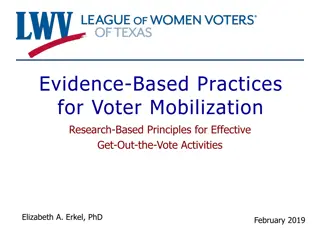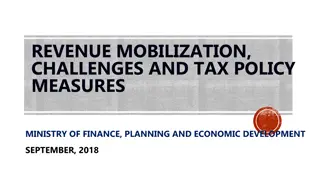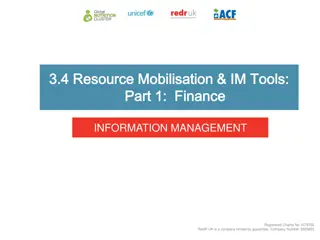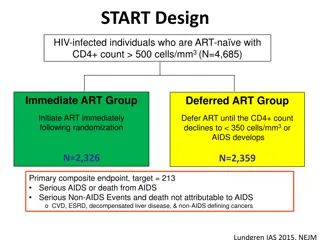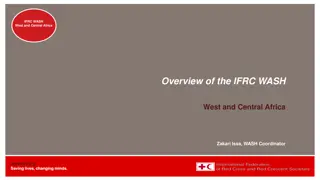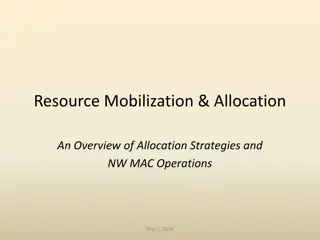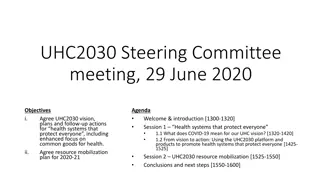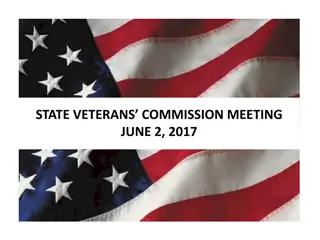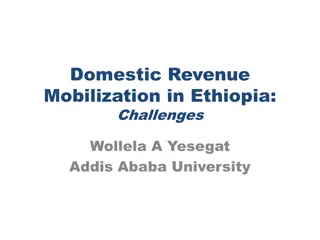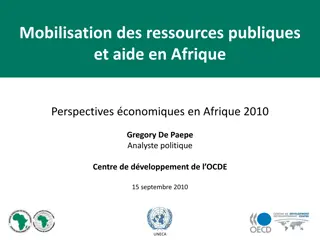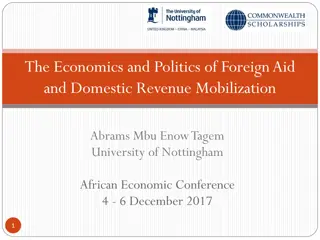UHC2030 Resource Mobilization Immediate Plan and Opportunities
Agreed on Terms of Reference, principles for resource mobilization roadmap, and timeline. Short-term gap filling for 2020 and longer-term strategy for resource mobilization emphasized. Focus on multi-stakeholder approach, including civil society and private sector. Results areas include political momentum, shared goals, engaged communities, harmonized health systems, knowledge networks, and partnership governance.
Download Presentation

Please find below an Image/Link to download the presentation.
The content on the website is provided AS IS for your information and personal use only. It may not be sold, licensed, or shared on other websites without obtaining consent from the author.If you encounter any issues during the download, it is possible that the publisher has removed the file from their server.
You are allowed to download the files provided on this website for personal or commercial use, subject to the condition that they are used lawfully. All files are the property of their respective owners.
The content on the website is provided AS IS for your information and personal use only. It may not be sold, licensed, or shared on other websites without obtaining consent from the author.
E N D
Presentation Transcript
UHC2030 RESOURCE MOBILIZATION IMMEDIATE PLAN AND OPPORTUNITIES 29 June 2020 7thUHC203 Steering Committee Meeting Gang Sun on behalf of the RM Subgroup Kyoko Odaka (Japan), Kate Dodson (UN Foundation), Shariha Khalid Erichsen (Mission&Co), Eliana Monteforte (MSH) Gang Sun (UNAIDS) with support from Core Team: Marjolaine Nicod, Toomas Palu and Fr d ric Martel
Agreed on ToRs, principles for resource mobilization Roadmap and timeline Short term filling the gaps for 2020 Longer term agreed resource mobilization strategy, collective responsibility, equitable Value proposition Only multi-stakeholder platform for UHC, inclusive particularly the civil society and private sector Keep momentum of UHC HLM/Political Declaration, including accountability Coherence of frameworks across disease programs, HSS Knowledge and information sharing What it is NOT Clarification on budget and resource needs Call for resource against a clear set of products WHAT HAVE BEEN DONE BY THE SUBGROUP
Results areas 2020 Products Base cash Increment direct financing/in kind Total VOICE 1.1 Political momentum i. ii. iii. i. ii. i. ii. iii. iv. v. State of UHC Commitment report UHC political advisory panel UHC briefs for G7, G20 and other forums Integrated UHC accountability framework Advocacy briefs on coherence across health and disease programmes UHC 101 + guidance for country advocacy Social Participation Handbook (*advocacy, support to 2 country processes) Consensus approach for funding country CSOs/platforms Budget watchdog toolkit pilots (incl. 2 regional workshops) UHC Day (*campaigns, grants) 225 000 50 000 25 000 65 000 25 000 25 000 45 000 25 000 45 000 45 000 25 000 25 000 1.2 Shared UHC goals 25 000 1.3 Engaged communities 55 000 300 000 60 000 195 000 165 000 1 425 000 WORKING BETTER TOGETHER 2.1 Harmonised health systems strengthening i. Harmonised HSS guidance and tools a. Sustainability and transition b. Health systems performance assessment c. Public financial management for UHC d. Fragile settings Demand-led UHC country compacts a. Updated guidance for different country contexts b. Country compacts in at least 3 countries UHC and health security policy note + collaboration platform TBC 65 000 25 000 25 000 10 000 240 000 95 000 95 000 40 000 ii. 65 000 45 000 30 000 30 000 180 000 iii. 805 000 KNOWLEDGE AND NETWORKS 3.1 Stakeholder platforms i. ii. iii. i. ii. iii. Civil Society Engagement Mechanism (+ Output 1 products) Private Sector Constituency (+ HLM statement follow-up) UHC2030 Related Initiatives (+ info pack, joint events) PHC for UHC and SDGs collaborative + knowledge platform (G7, G20) 5 substantive blogs/papers linked to outputs 1, 2 Knowledge hub 625 000 10 000 40 000 30 000 45 000 125 000 25 000 3.2 Knowledge and learning 480 000 1 410 000 PARTNERSHIP GOVERNANCE 4.1 Vision i. ii. Commitment to action vision paper Communications strategy (+ website, social media) 35 000 150 000 4.2 Governance i. ii. Steering committee Resource mobilization strategy (+ sub-committee) 135 000 10 000 45 000 4.3 Secretariat i. ii. Annual Report (+ interim workplan & results updates) Revised co-host administration arrangements 65 000 10 000 560 000 TOTAL 1 995 000 2 205 000 4 200 000
Collective responsibility of UHC2030 constituencies represented in the Steering Committee For agreed work program that brings value to all stakeholders Buy-in for and promotion of agreed products Equitable and fair commitment based on ability to pay Results oriented Different ways to contribute Unearmarked funding to support UHC2030 as a platform Parallel financing: direct support to specific work program activities (e.g. health financing advocacy with Global Fund and GFF + direct funding of in- country capacity development activities) In kind contributions: staffing, organization of specific meetings (e.g. UNAIDS and IFRC in-kind support to campaigns, events or meetings) Opportunities in the context of ACT-A: UHC2030 products that can support the initiative on good governance (e.g. civil society and community engagement, private sector) Options for fund management Explore feasibility of creating dedicated a trust fund within WHO, World Bank and/or UN based multi-donor trust fund Earmark part of other funding channeled through the UHC2030 Secretariat co-conveners (WHO, WB) for UHC2030 activities KEY PRINCIPLES FOR RESOURCE MOBILIZATION
Review, comment and endorse the plan SUGGESTIONS ON WHAT THE STEERING COMMITTEE Reach-out to major donors and global health initiatives Political Advisory Panel Communication Encourage core team, individual members and constituencies for Make best use of existing programmes Mobilize additional resource Advocate for resource for UHC and health Explore possibilities of a UHC2030 trust fund CAN CONTRIBUTE
Build up/utilize the value proposition Core team to finalise, based on guidance from sub-group, together with a 3-4 page case for support document (mid-July) SHORT TERM PLAN (PHASE I UPTO OCTOBER) Differentiated and coordinated approaches High-income country (maintain, re-engage and expand) Middle-income Country (emerging economy) Multilateral Foundation (re-engaging and mobilizing) Private Sector Countries in favor of civil society engagement
Financial situation 2020-2021 (US$) 2020 2021 2,138,123 1,161,655 Income (expected as of June 2020) Direct financing in kind contribution tbc tbc 1,995,000 *1,790,000 2,205,000 *1,395,000 4,200,000 *3,185,000**4,200,000 2,061,877 *1,046,877 1,995,000 Budget Base program 2,205,000 Increment to full program Total budget Resource mobilization needs 3,038,345 of which 0 833,345 for base program *Preliminary adjustments based on COVID-19 savings / deferrals **Provisional figure based on zero growth assumption
Overview of resource mobilization 2019-2022 (US$) 2019 2020 2021 2022 Sources 797,129 *(320 034) *(320 034) Carry forward 500,000 --- --- --- Luxembourg 540,845 1,081,689 1,081,689 1,081,689 EU 1,027,068 776,468 (tbc) tbc tbc Japan --- 400,000 (tbc) 400,000 (tbc) --- Donor (tbc) 250,000 200,000 tbc tbc WHO --- tbc tbc tbc World Bank 3,115,042 2,138,123 1,161,655 1,081,689 Total 3,755,110 Expenditure * The (640 068) deficit of 2019 has to be reimbursed to WHO during the 2020-21 biennium Contributions marked as tbc contributions which have been pledged but not confirmed
